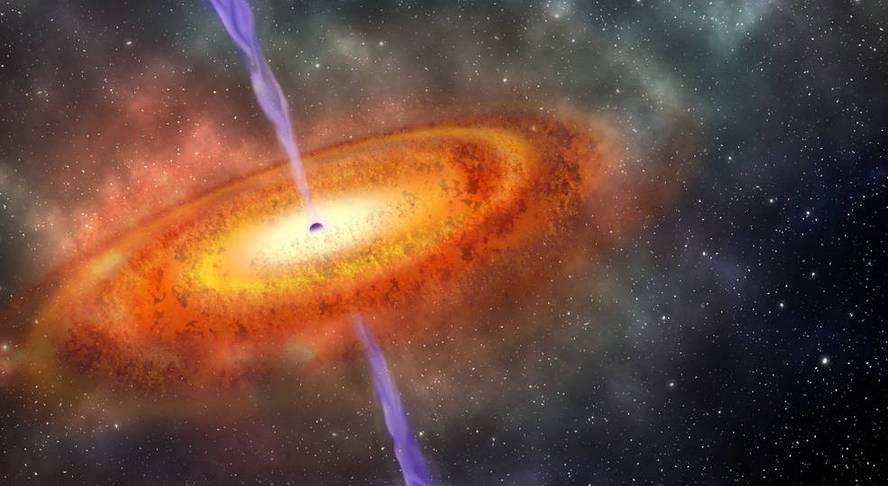They detect the farthest black hole

Astronomers at the Carnegie Institute, through an article published in the journal Nature, discover a black hole discovered so far. They have explained that it is a quasar of 800 million mass greater than the Sun and that it was created when the Universe was 690 million years old, that is, it only had 5% of its present age. This quasar allows to analyze how the first moments of the evolution of the Universe were.
In fact, according to the most accepted hypothesis, the Universe was originally a "hot soup" of particles. Through a process called inflation, it expanded enormously and at 400,000 years the particles cooled down resulting in a neutral hydrogen. At that time the Universe was totally dark, there was no light. Subsequently, the energy released by the ancient galaxies caused the ionization of hydrogen, which caused photons to begin to travel in space. Since then, the Universe is transparent to light. Well, most of the hydrogen surrounding the quasar they have discovered is neutral. This coincides with the hypothesis of the evolution of the Universe.
They have called it ULAS J1342+0928 and have known how far it is by sliding to the red. Thus they have confirmed that it is the farthest quasar detected and that it is moving away from us 7.54 times more than that of light.






